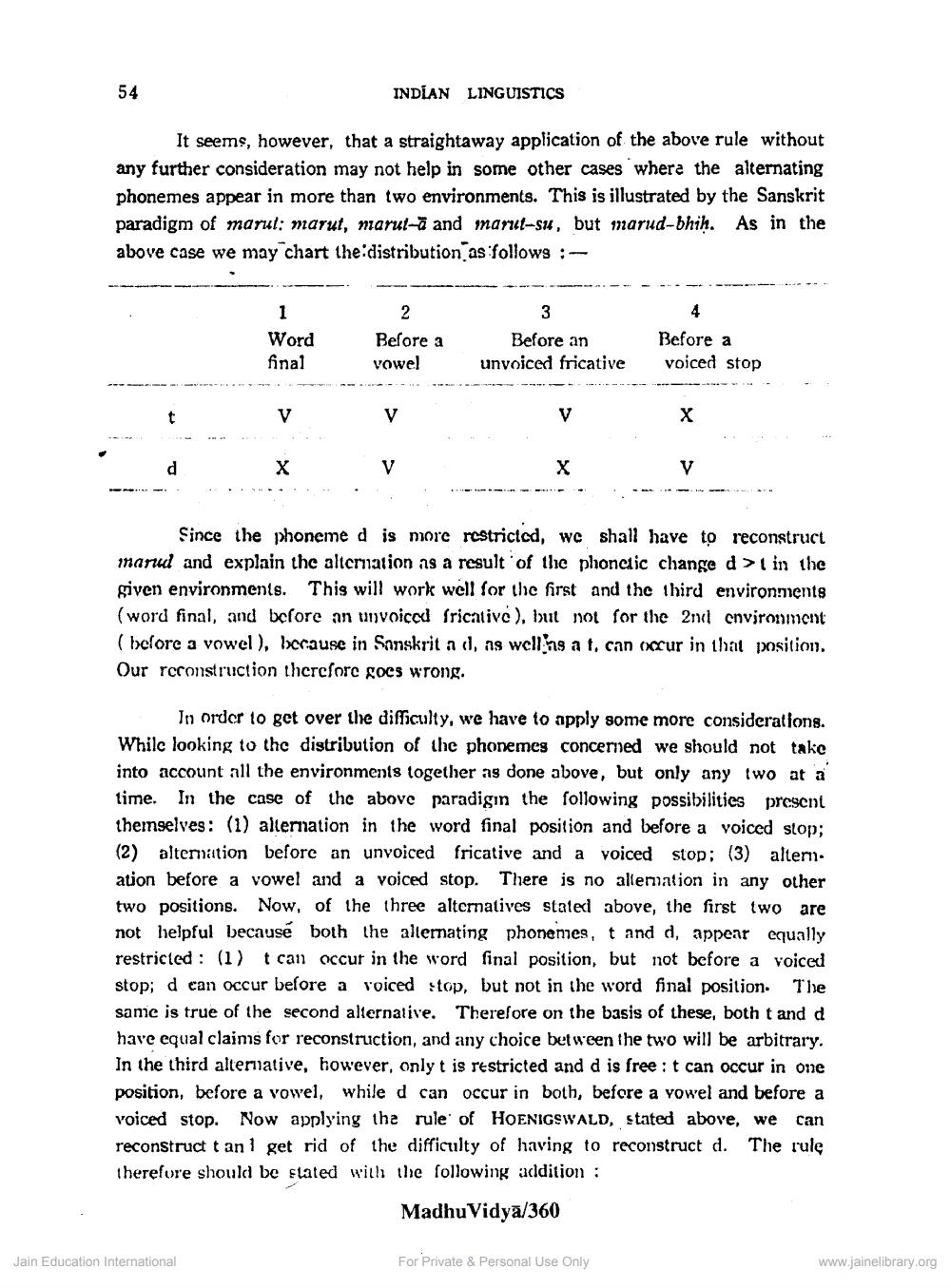________________
54
INDLAN LINGUISTICS
It seems, however, that a straightaway application of the above rule without any further consideration may not help in some other cases where the alternating phonemes appear in more than two environments. This is illustrated by the Sanskrit paradigm of marut: marut, marul- and marut-su, but marud-bhiḥ. As in the above case we may chart the distribution as follows :
Word final
2 Before a vowel
3 Before an unvoiced fricative
Before a voiced stop
v
v
C
a
x
V
x
v
Since the phoneme d is more restricted, we shall have to reconstruct manu and explain the alteration as a result of the phonetic change d > t in the given environments. This will work well for the first and the third environments (word final, and before an unvoiced fricative), but not for the 2nd environment ( before a vowel), because in Sanskrit ad, as well ns a t. can occur in that position. Our reconstruction therefore gocs wrong.
To order to get over the difficulty, we have to apply some more considerations. While looking to the distribution of the phonemes concerned we should not take into account all the environments together as done above, but only any two at a time. In the case of the above paradigin the following possibilities present themselves: (1) allernation in the word final position and before a voiced stop; (2) alternation before an unvoiced fricative and a voiced stop: (3) altem. ation before a vowel and a voiced stop. There is no alteration in any other two positions. Now, of the three alternatives stated above, the first two are not helpful becausé both the alternating phonemes, t and d, appear equally restricted: (1) t can occur in the word final position, but not before a voiced stop; d can occur before a voiced stop, but not in the word final position. The same is true of the second alternative. Therefore on the basis of these, both t and d have equal claims for reconstruction, and any choice between the two will be arbitrary. In the third alternative, however, only t is restricted and d is free: t can occur in one position, before a vowel, while d can occur in both, before a vowel and before a voiced stop. Now applying the rule of HOENIGSWALD, stated above, we can reconstruct t an 1 get rid of the difficulty of having to reconstruct d. The rule therefore should be flated with the following addition :
MadhuVidya/360
Jain Education International
For Private & Personal Use Only
www.jainelibrary.org




